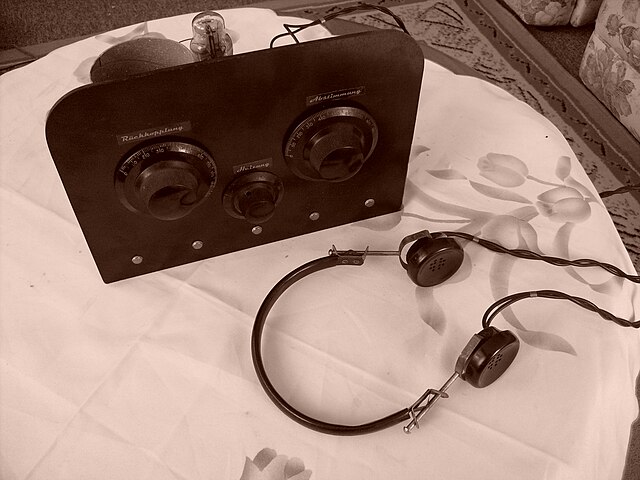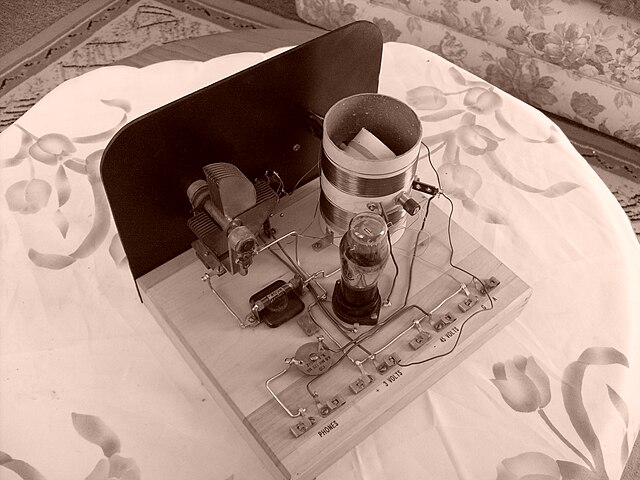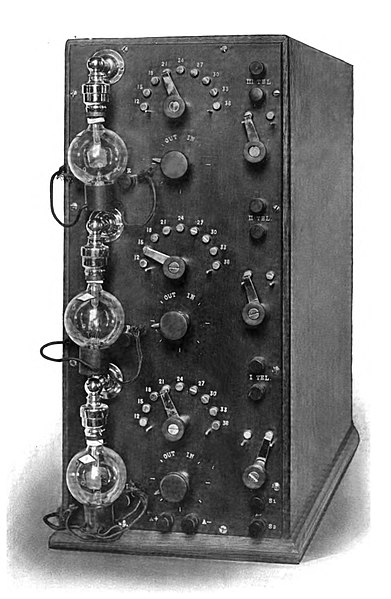A regenerative circuit is an amplifier circuit that employs positive feedback. Some of the output of the amplifying device is applied back to its input to add to the input signal, increasing the amplification. One example is the Schmitt trigger, but the most common use of the term is in RF amplifiers, and especially regenerative receivers, to greatly increase the gain of a single amplifier stage.
Homebuilt Armstrong one-tube regenerative shortwave radio with construction characteristic of the 1930s - 40s. The controls are (left) regeneration, (lower center) filament rheostat, (right) tuning capacitor.
Rear view of the above radio, showing the simplicity of the regenerative design. The tickler coil is visible inside the tuning coil and is turned by a shaft from the front panel; this type of adjustable transformer was called a variocoupler.
Edwin Armstrong presenting the superregenerative receiver at the June 28, 1922 meeting of the Radio Club of America in Havemeyer Hall, Columbia University, New York. His prototype 3 tube receiver was as sensitive as conventional receivers with 9 tubes.
An amplifier, electronic amplifier or (informally) amp is an electronic device that can increase the magnitude of a signal. It is a two-port electronic circuit that uses electric power from a power supply to increase the amplitude of a signal applied to its input terminals, producing a proportionally greater amplitude signal at its output. The amount of amplification provided by an amplifier is measured by its gain: the ratio of output voltage, current, or power to input. An amplifier is defined as a circuit that has a power gain greater than one.
A McIntosh stereo audio amplifier with output power of 50 watts per channel used in home component audio systems in the 1970s.
De Forest's prototype audio amplifier of 1914. The Audion (triode) vacuum tube had a voltage gain of about 5, providing a total gain of approximately 125 for this three-stage amplifier.
Power amplifier by Skyworks Solutions in a Smartphone.
An LM741 general purpose op-amp







